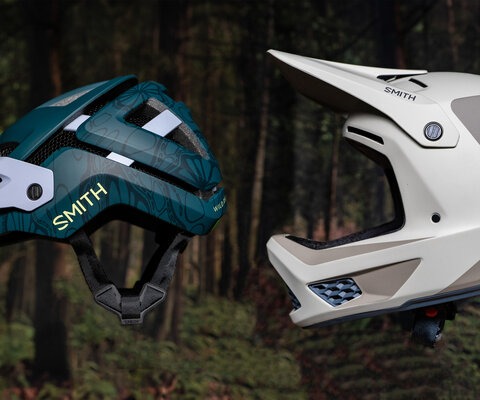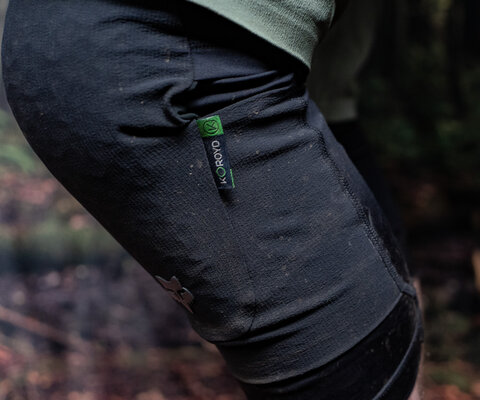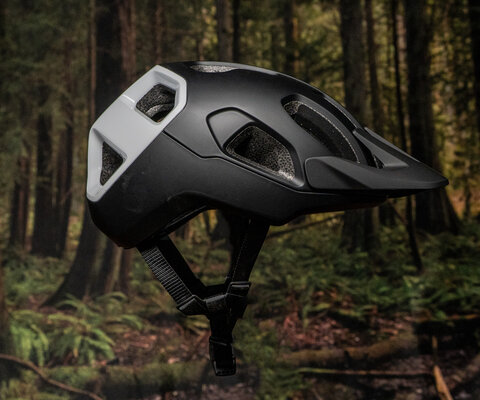
Pivot Shuttle SL/AM Pro XO Bike Review
Words and Photos by Cy Whitling
Jack of all trades
The Shuttle SL/AM is Pivot’s newest bike, and its fourth e-bike. It has 150/160 millimeters of travel, weighs just under 40 pounds in its lightest build, and uses a Bosch SX motor and 400 Wh battery. That means that it’s not Pivot’s lightest weight e-bike (that’s the 130/150 millimeter Shuttle SL), or its most powerful e-bike (that’s the Shuttle LT 160/170 with millimeters of travel), or its other almost 150/160 millimeter e-bike (that’s the 148/160 millimeter, Bosch CX motor-equipped Shuttle AM.)
Instead, it’s the do-it-all option in Pivot's line: almost as light as the Shuttle SL, almost able to hang with the full powered hawg that is the Shuttle LT, with travel and geometry that should be able to handle most trails. Or, put it another way, it’s a lighter Shuttle AM or a motorized Switchblade. So, what’s Pivot’s recipe for a “default” e-bike?
Pivot Shuttle SL/AM Details
- Travel: 150 mm (rear) 160 mm (front)
- Wheel Size: 29” with MX capabilities
- Size Tested: Large
- Build Tested: Pro XO
- Head Tube Angle: 64.5°
- Motor: Bosch Performance Line SX
- Battery: 400 Wh
- Measured weight: 43.06 lbs (19.53 kg)
- MSRP: $10,399
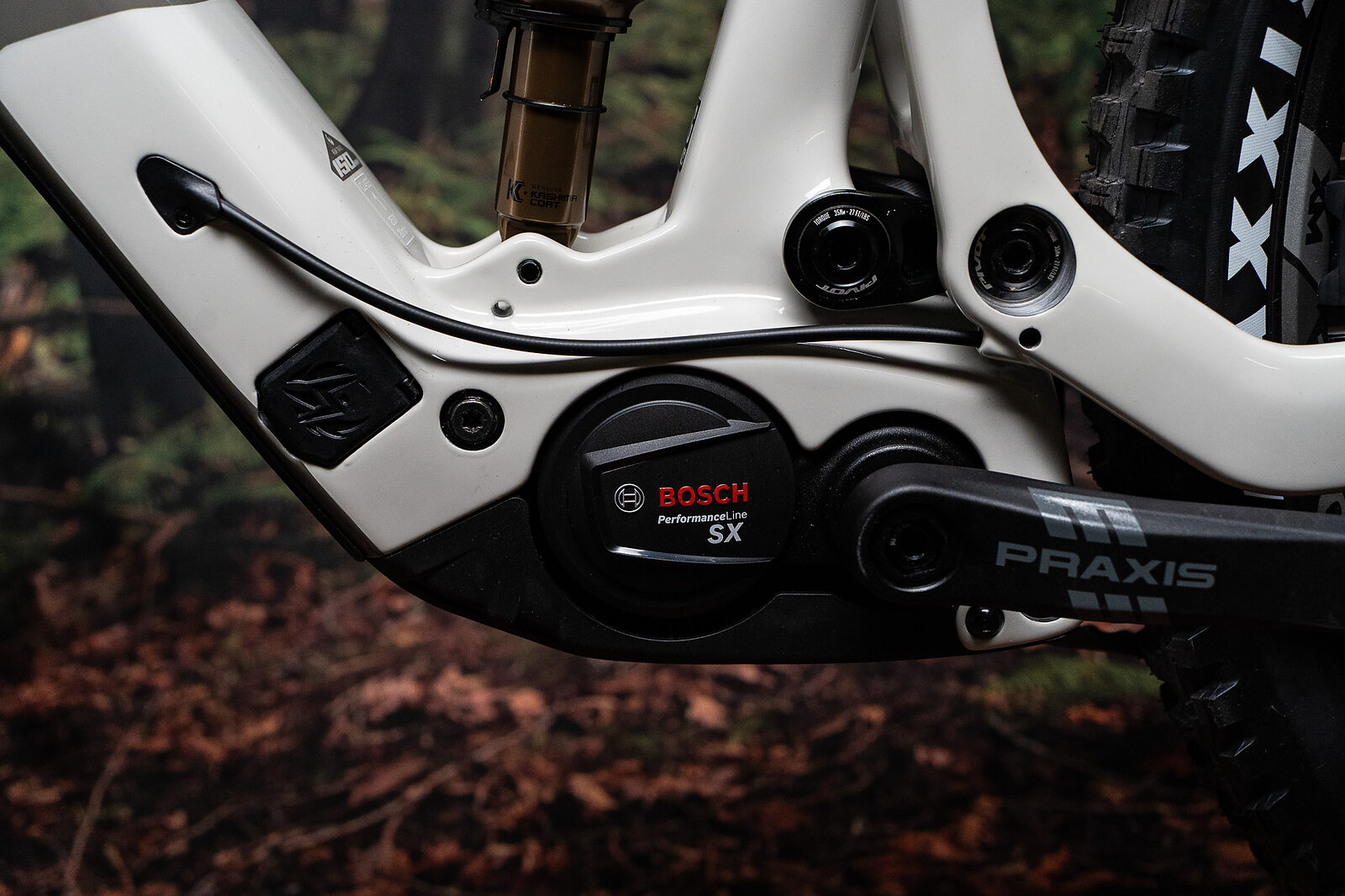
Motor and Battery
The Shuttle SL/AM is built around Bosch’s Performance Line SX motor. This motor delivers a claimed 55 Nm of torque, and 600 W of peak power. It’s connected to a 400 Wh battery, and you can also put a 250 Wh range extender in the bottle cage. There's also a sleek wireless controller on the left side of the bars to cycle through modes.
This Bosch Line SX motor is an interesting contender. It’s just a touch heavier than the Fazua and TQ motors that many lightweight e-bikes are outfitted with, but delivers near-full-power e-bike peak power. In some ways it's one of the best bridges of that gap between lightweight and full power bikes at the moment.
There are a couple of things worth noting about this system though. First, right now the entire Bosch e-bike motor ecosystem is in a weird “it’s pretty good, but it sure sounds like there are updates coming soon that will make everything way better” place. Bosch has hinted at these firmware updates which will bring more power and torque to its drive systems sometime this summer. So those stated stats could change soon. Similarly, there’s plenty of speculation online about the future of Bosch’s top tube display. For now, it’s a simple affair with multicolor LEDs that indicate what mode you’re in, and how much battery you’ve burnt. But, similar to the Transition Regulator, the SL/AM mounts that system in a large blanking plate on the top tube, hinting at the fact that there could be a digital display coming soon.
For now though, even without those potential upgrades, the SL/AM’s motor system delivers a nice ratio of power to weight, and the simpler top tube interface helps riders focus less on their stats and battery level, and more on the ride.
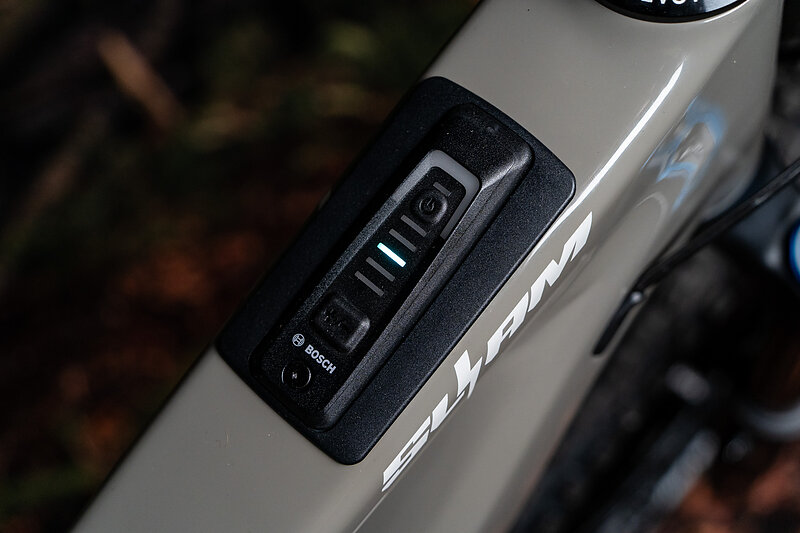
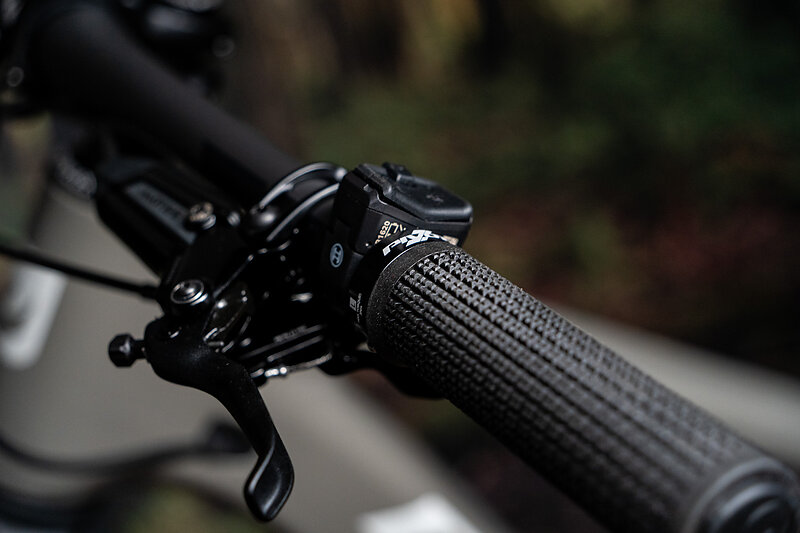
Shuttle SL/AM Geometry
The SL/AM has very similar geometry to Pivot’s Shuttle AM. In “low” mode they share the same 64.1° head tube angle, 476 millimeter reach, 444 millimeter chainstay, and their seat tube angles are only .1° different. However, the Shuttle AM has a slightly higher stack (648 vs 651 millimeters). All-in, these bikes are super similar to each other, but the SL/AM is lighter and less powerful.
The built in flip chip raises the bottom bracket 5 millimeters, and steepens the head tube out by .4°—this partially compensates for the geometry changes of swapping in a 29-inch rear wheel, or allows folks to steepen the bike up for flatter terrain.
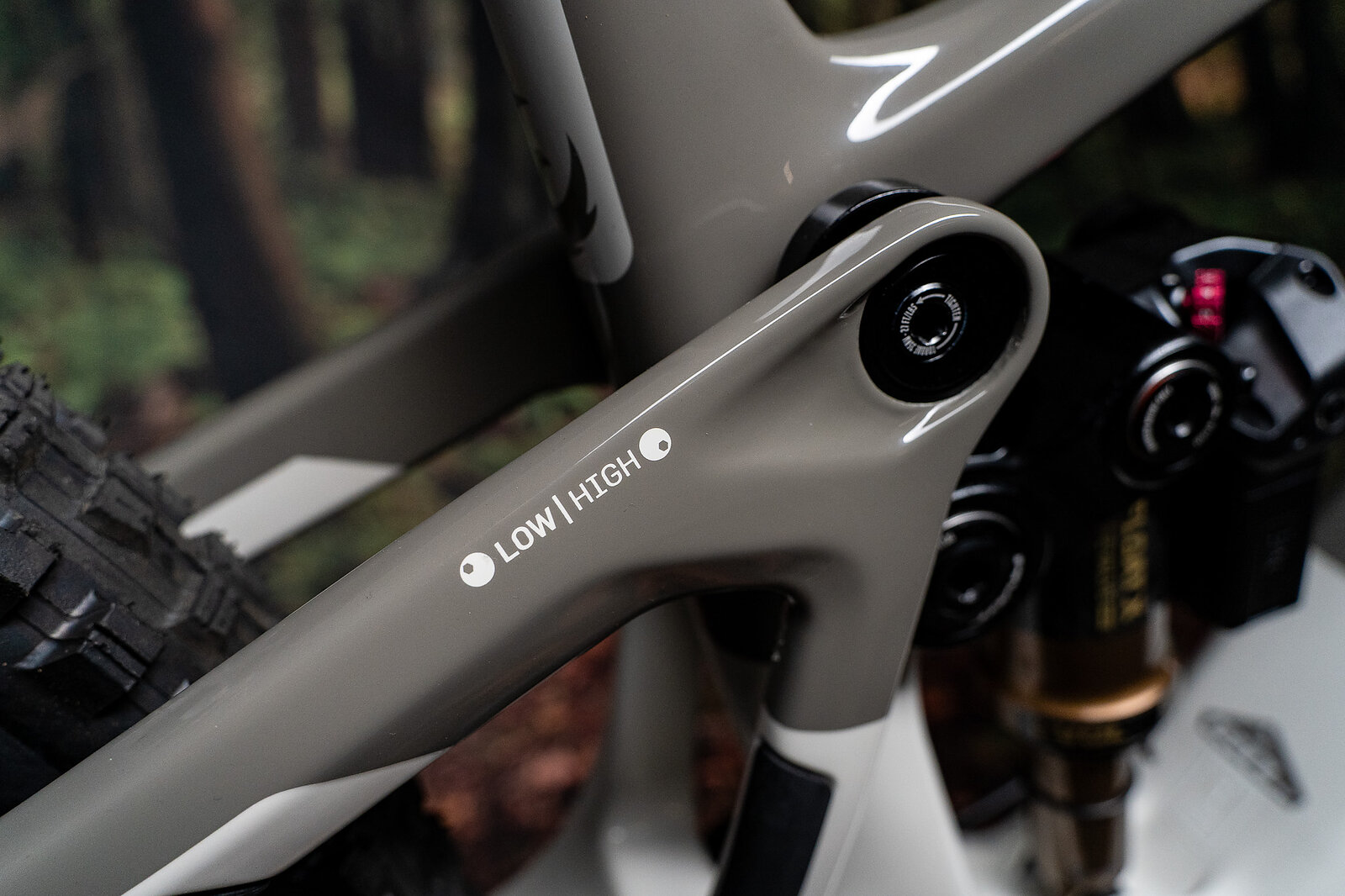
Shuttle SL/AM Frame Details
Beyond that flip chip, the SL/AM has a relatively sleek, and straightforward frame, with a couple of highlights. Pivot says it put a lot of effort into separating the “mountain bike” system from the motor and battery so that if you need to work on one, you don’t have to delve into the other. That’s much appreciated If we’re going to add motors to bikes, this should be the baseline for mechanic-friendlyness.
Cables are internally routed, with a clamping and tube system that allow riders to run pretty much any permutation of shifter, dropper, and brakes on either side of the bars. The extra small SL/AM is only available with mixed wheels, and uses a Fox Float shock without a reservoir so that it can still clear a water bottle or range extender. All other models use a Fox Float X, and can be upgraded to the Live Valve Neo version which I rode.
Pivot put a lot of effort into its bespoke charge port door to make sure that it was sleek, secure, and weatherproof. It’s also removable when you’re running the range extender. Like the rest of Pivot’s line, the carbon layup of each size is tweaked to deliver an appropriate ride feel, the SL/AM uses SuperBoost rear axle spacing, and uses DW Link suspension.
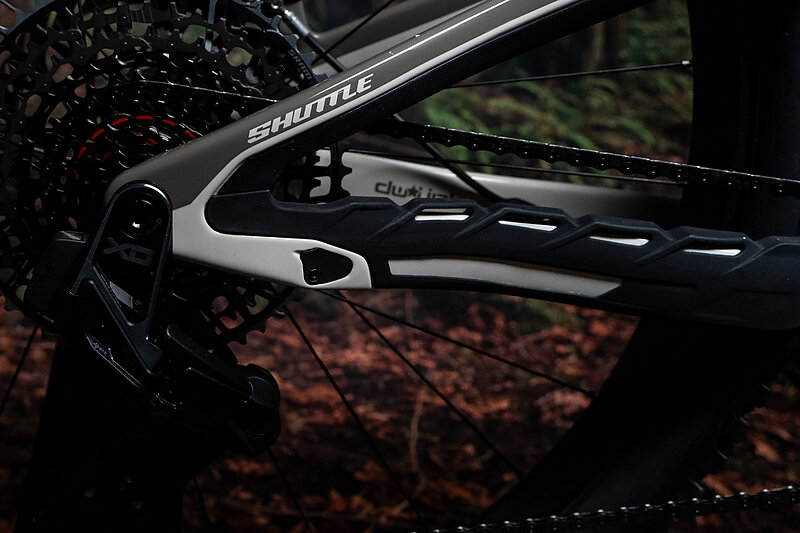

Shuttle SL/AM Build
I rode the Pro XO build of the Shuttle SL/AM, with the optional $1,450 Fox Live Valve Neo upgrade. As the name suggests, the Pro XO uses SRAM’s XO Transmission, along with a Factory level Fox 36 and Float X. DT Swiss takes care of the wheels with an alloy XM1700 wheelset, shod in the classic Maxxis DHF/R combo.
First, a quick list of highlights, before we dive into a one questionable spec choice: XO Transmission is still great, the new 36 is really impressive, Pivot’s house-brand bar and stem are quite nice, and I’m always stoked to see a 210-millimeter dropper out of the box. Would I love to see slightly burlier tires? Yes, totally, but that’s more of a regional thing.
However, Pivot specs SRAM’s Motive brakes on this bike. The Motive is going to be the center of an interesting discussion this year. Is it enough brake for e-bikes? Is it enough brake for bikes with 160-millimeter forks? I’d answer a confident “no” to both those questions, but I’m also not a product manager trying to squeak my claimed weights under that aspirational 40 pound number and make my bikes work the best for a wide range of riders. Instead, I’m a heavy dude riding steep trails.
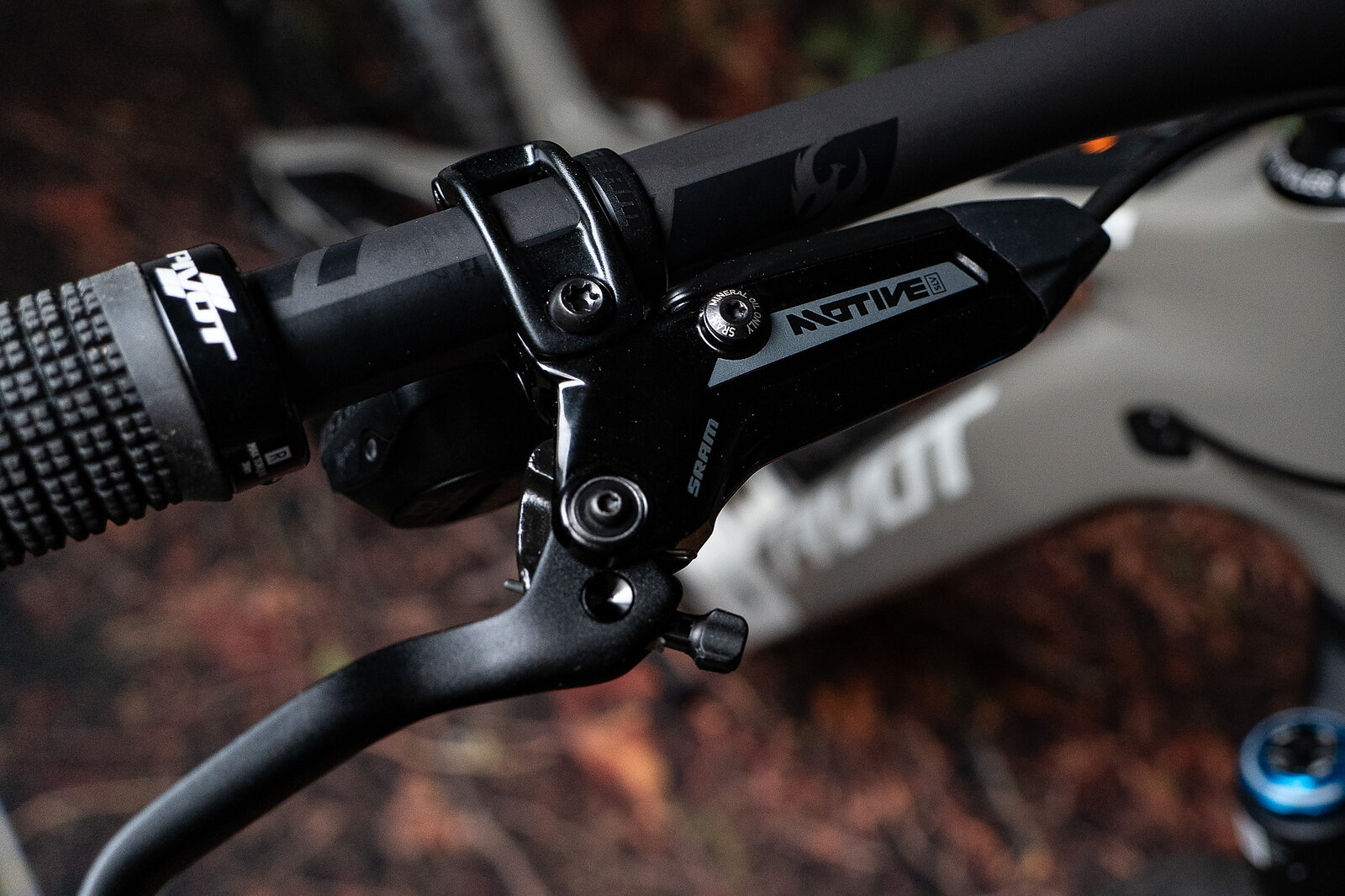
When I first started reviewing the Motive, SRAM told me to put them on a bike with less than 130 millimeters of travel. I did, and they felt appropriate. I didn't have any desire to run them on anything bigger. There’s a power jump between the Maven and the Motive that everyone will react to differently. Mavens with small, thin rotors still feel substantially more powerful and grabbier than Motives with big, thick rotors.
A set of Mavens weighs about half a pound more than the Motive with the same rotors. So, for bikes that fall at the top end of the Motive’s range, and the bottom end of the Maven’s range, from a weight standpoint, it makes a lot more sense for product managers to spec Motives with metallic pads and bigger rotors than Mavens with organic pads and smaller rotors.
But, as a rider, I’d take Mavens on the Shuttle SL/AM every time, by a strong margin. I do not see the point in a bike with a motor that gets you to the top of the hill faster, and brakes that make it scary to go back down. For PNW riding, the Motive is absolutely inadequate for a 150-millimeter, 40-pound e-bike. It severely handicapped every ride I had on the SL/AM and made it challenging to get to know the SL/AM’s descending personality.
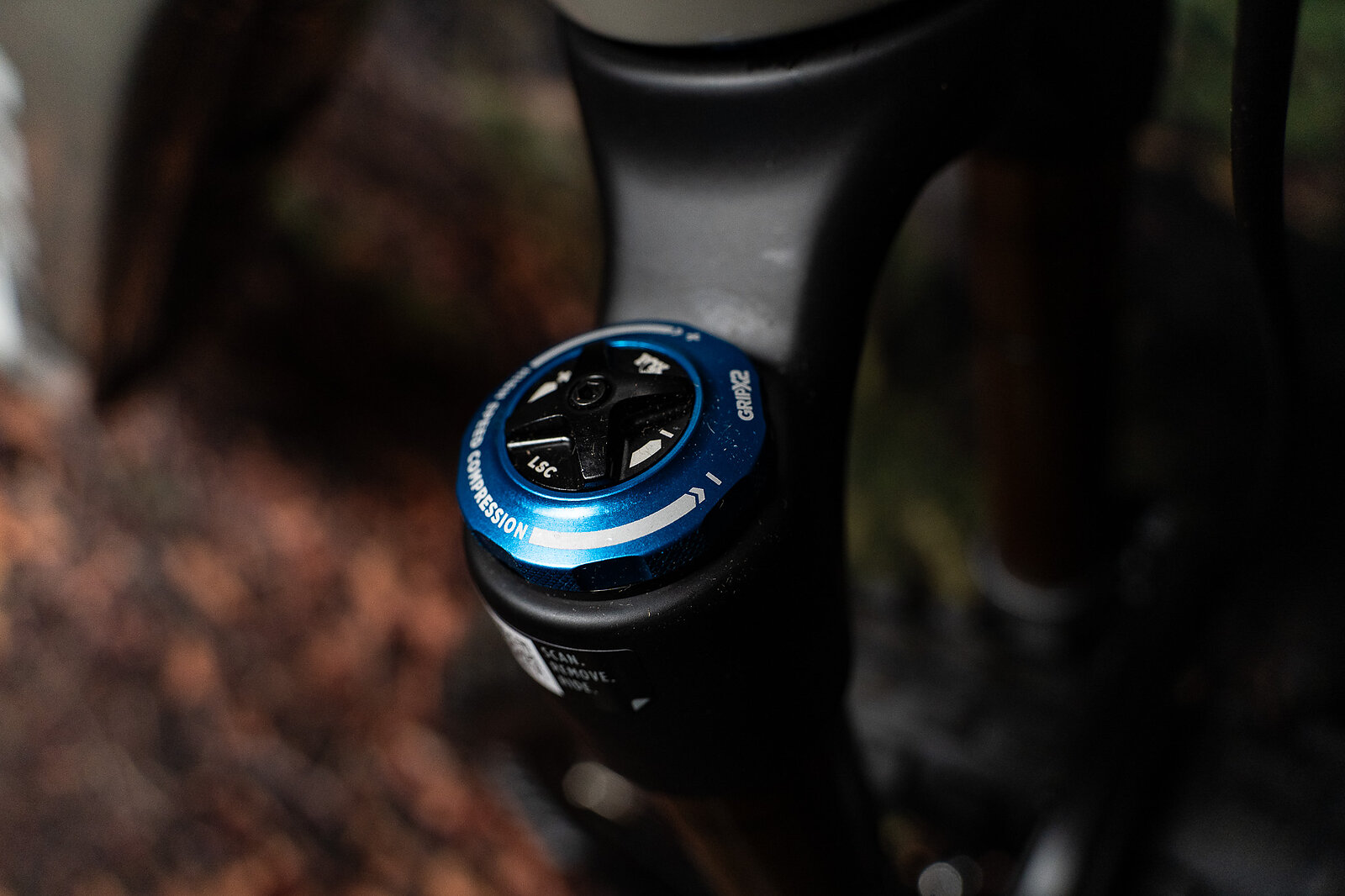
Riding the Pivot Shuttle SL/AM
Of late, my motorized rides have been split between the Yeti MTe with TQ’s new HPR60 system, and the full power Specialized Levo 4 Alloy. And the Bosch SX system straddles an interesting line between the two. It’s got significantly more max power, but less torque than the TQ. That means that it responds best to a much higher cadence, sit-and-spin technique than the Yeti. And if you’re riding fairly smooth, non-technical terrain where you can keep that cadence, it’s entirely possible to keep up with riders on full power e-bikes, provided they let off the gas a little, and you work hard.
But, when the going gets tight and techy, that lower torque starts to rear its head. One of the things I liked most about the MTe’s TQ motor is that it does a good job of providing torque during slow, out-of-the-saddle efforts. It lets me ride more like I would on a real bike. But the SL/AM is much more prone to stalling out in those situations—it wants you to be in an easier gear, and carry cadence through things, instead of exploding over them.
So, if most of your climbing is on roads or smooth climb trails, the Bosch Line SX punches impressively far above its weight. But, the more you’re doing silly challenge climbs on rutted moto trails, the more you’ll be losing out to a full power e-bike.
Otherwise, the Line SX is fairly quiet, although it does have an audible clunk from the ratchet mechanism while descending. I got used to it fairly quickly, but it is disconcerting to start with.
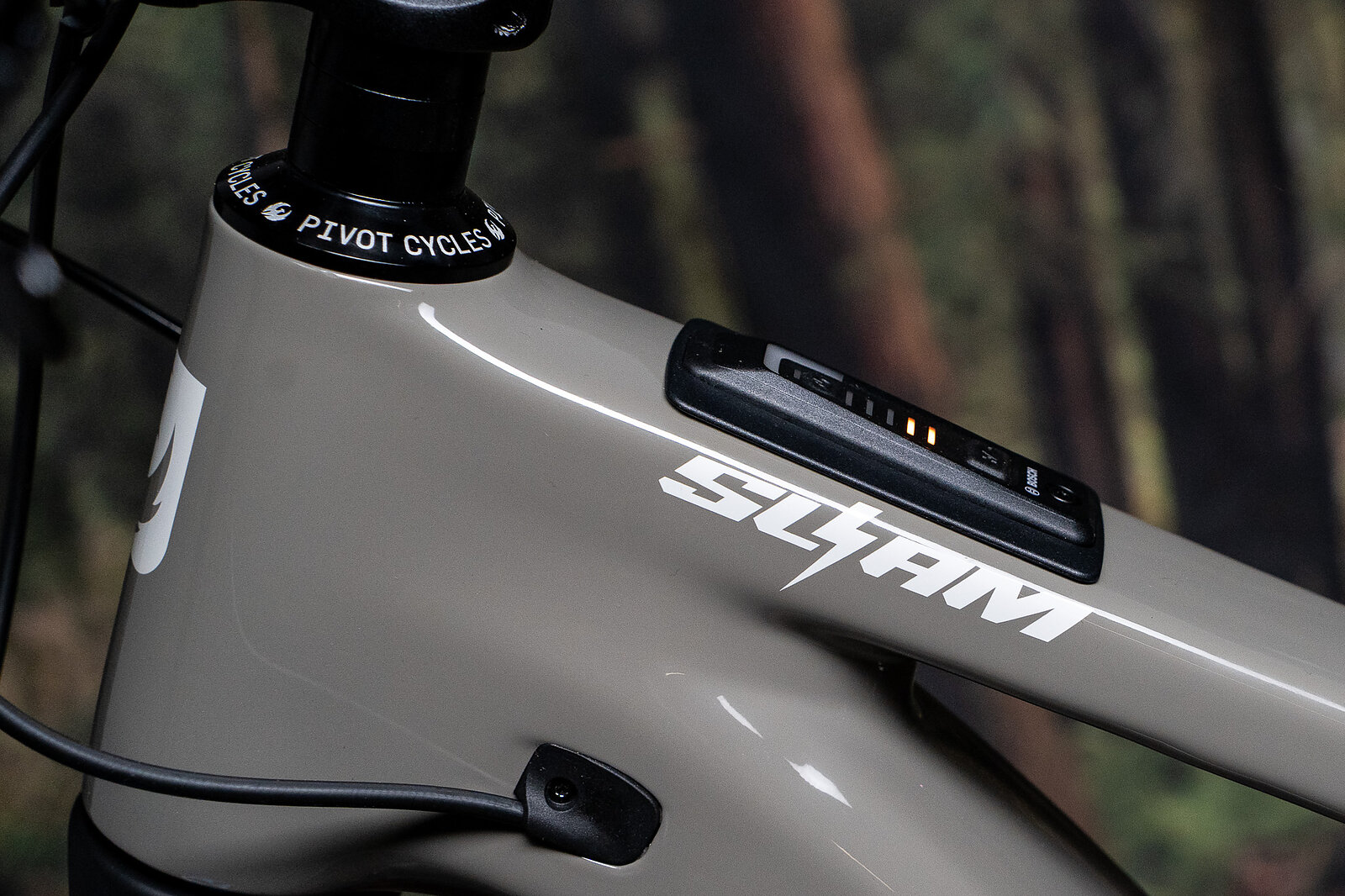
Going downhill, the biggest thing I noticed about the SL/AM was its weight. It’s right around the top end of what my personal pedal bikes tend to weigh, which means it feels absurdly light for an e-bike. I’s easier to lift on and off of the bike rack, but also, more importantly, it’s very nimble on the trail. This is a fun bike to ride on meandering, mellow trails, where you’re looking for side hits and other options to make the trail more interesting. It’s so easy to whip around and loft into the air.
On paper, it seems like the SL/AM should descend very similarly to the Yeti MTe. They have very similar geometry and travel numbers. But instead, the SL/AM feels lighter-footed, and much less eager to smash through steep, or challenging terrain. It responds better to a gentle, precise touch than the Yeti which encouraged me to point and shoot and think about the consequences later.
I think there are two factors behind this. First is the spec. A bike with Mavens and Schwalbe radial tires is always going to be more eager to get into the gnar than a bike with Motives and EXO MaxxTerra Minions. Put the Yeti’s brakes and tires on the SL/AM and I bet you’d unlock a new edge.
Second, the Shuttle SL/AM’s rear suspension feels less plush and velvety smooth over smaller impacts than the MTe’s. It creates less traction, but it also feels tighter, and more taut—it’s happier to spring you over roots and holes, and less interested in absorbing them. And it’s interesting to see how that plays out with both a motor, and the optional Fox Neo Live Valve upgraded shock I used.
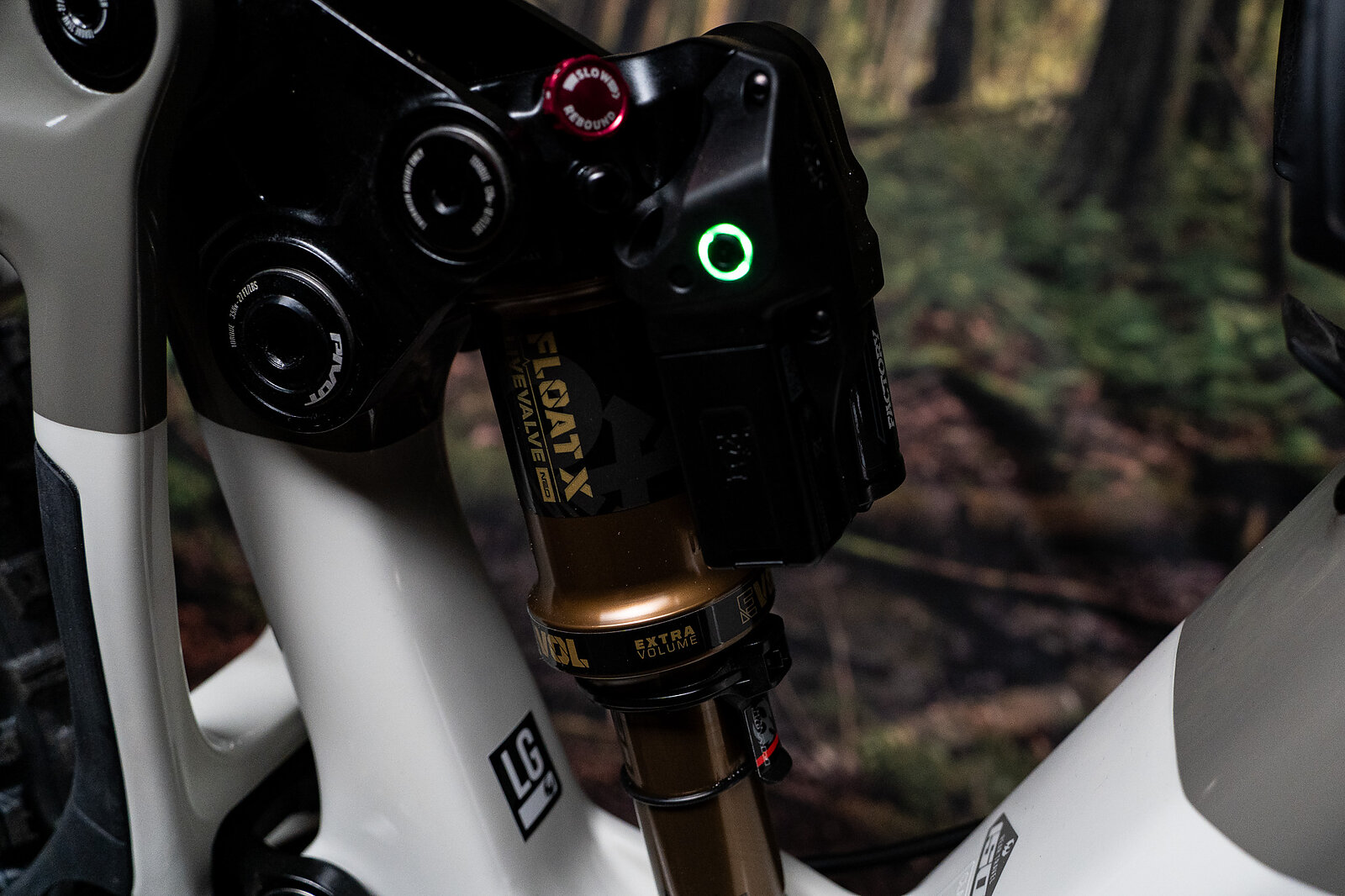
Live Valve Neo Upgrade
This was my first experience with Fox’s Live Valve Neo, and I came away quite impressed. The system is easy to set up, and easy to adjust via the app. And it does a really good job of disappearing when you’re riding. You can go terrifyingly deep in the app, dialing in your bump sensitivity and settings, or you can trust Fox and Pivot, and just stick to the default. After a little experimenting, that’s what I did.
In that default setting, the Shuttle SL/AM is absurdly efficient on flat, smooth terrain. Every Pivot I’ve ridden in the past has also had a very supportive pedaling platform—that’s one of the brand’s calling cards after all—but the Live Valve Neo shock takes that to a new level. It doesn’t feel like any of your, or the motor’s watts are being wasted. But once you hit technical terrain, the bike opens up and becomes more reactive. It’s not quite as supple as something like a Specialized with a Genie shock—even fully open the SL/AM is a fairly efficient-feeling climber, but it’s still a noticeably different feel than while spinning on smooth ground.
So my takeaway is that Live Valve Neo is pretty cool. It’s responsive and well integrated, and especially if you plan on trying to eke all of the range possible out of your battery, it can make a difference. But, for me, and how I ride on an e-bike, it doesn’t really outweigh the upcharge. I’d love to try this system on a meat-powered bike, with a less efficient rear suspension design.
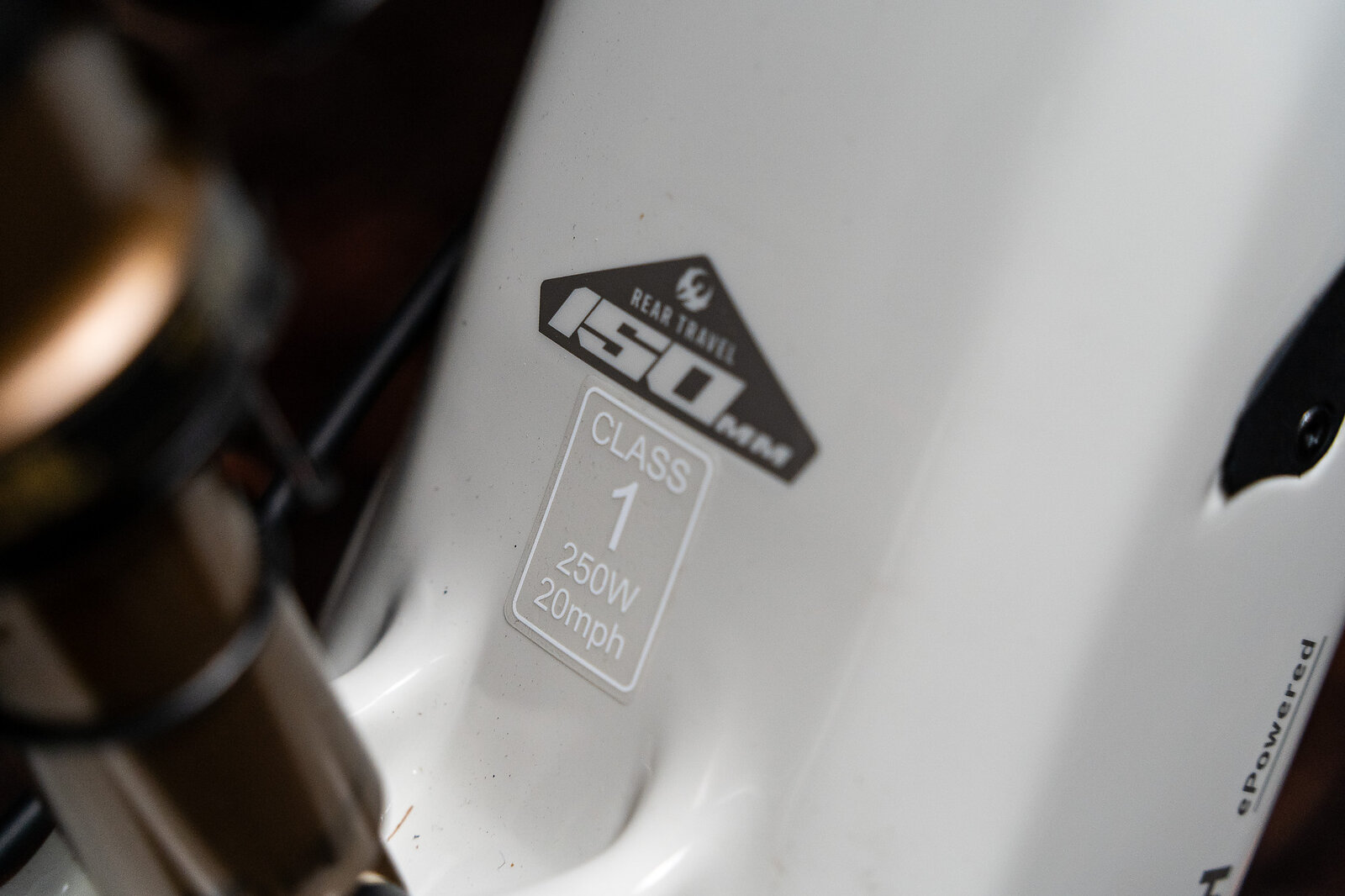
For Now
Pivot’s new Shuttle SL/AM fits into an interesting niche in their lineup. It’s a bit of a Goldilocks bike, not the most powerful and not the lightest either. Instead it strikes a nice balance that can shoehorn into a wider variety of riding scenarios than many other e-bikes.
Learn more: Pivot Cycles
